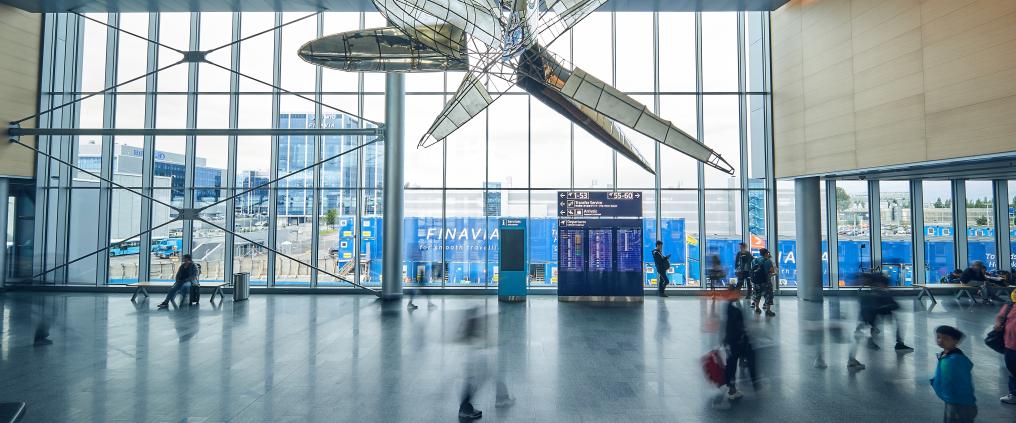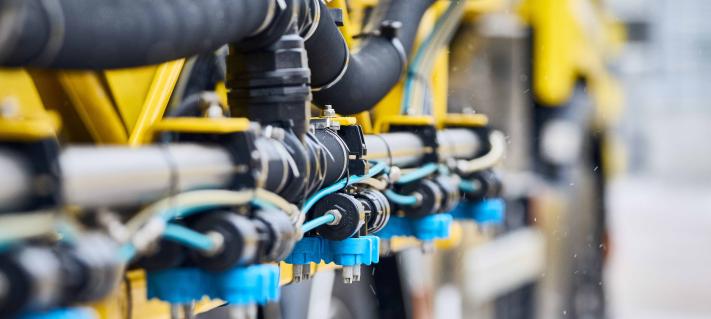Technological innovations, environmental responsibility and changing consumer behaviour – these trends are transforming the airport landscape and creting new demands and opportunities.
The International Aviation Organization (IATA) has estimated that airplanes will carry up to 16 billion passengers in 2050. It is therefore likely that the role of airports as transport hubs for and as a meeting point for different cultures will grow in significance. But what else is changing?
We asked two aviation experts about what life at airports could look like in 2050.
Flying focuses on long distance travel
Joni Sundelin, SVP of Finavia and Director of Helsinki Airport, says that the biggest change by 2050 will be that short-distance flights will have fallen significantly. “When the focus of air travel is on long haul flights, it will change the dynamics of future airports. The importance of big hub airports is growing.”
When air traffic is centred on large airports, the role of railways in feed traffic increases, says Jukka Sirén, an air traffic expert at Ramboll Finland. Ramboll is involved in designing the ongoing major historic extension of Helsinki Airport, which is due to be completed in the early 2020s.
The rail network and train connections to airports are likely to improve in the future. One concrete example is the Ring Rail Line which was completed in Helsinki in 2015. Sirén estimates that the current main railway from the north will at some point become connected directly to Helsinki Airport. “It is a good question whether the planned Tallinn tunnel also will connect to Helsinki Airport.”
Robots won’t replace customer service
What about airport automation? Will there be people working at airports at all in the future, or will artificial intelligence and robots be handling air traffic and passengers?
Sirén believes that future airport services such as security checkpoints and check-in will be highly automated. However, personal customer service will likely remain in some form, as robots cannot fully replace human interaction.
Sundelin believes this also applies to airport automation. “Helsinki Airport already uses a lot of non-visible automation, but it will be more plain to consumers in 2050. In 20 years’ time, most airport equipment, transport within terminals and operations in large passenger aircraft will probably be automated,” he says.
More personalised services with identification
Sundelin also believes that technology will evolve so that airport operations will be based on personal biometric identification. In the future, identification will lead to more personalised service. “Identification technologies enable personalised services, which will particularly benefit frequent flyers,” Sundelin says.
According to some views, airports and their services will resemble mini cities in 2050. The urbanisation of the airports is already visible today. At Helsinki Airport, for example, there are already over 20,000 jobs, and over 1,500 companies. The predicted growth of passengers’ volumes is estimated to generate another 5,000 permanent jobs in the area.
Commercial business, such as restaurants and shops, are important for airports’ profitability, so they will continue to have an important role to play in business also in the future. “It may be that there will be good opportunities for shopping in the future, but also a separate fast lane. This way passengers' individual needs are taken into account,” Sirén says.
Towards sustainable travel and consumption
One of the most important issues of the future is the sustainability of air traffic. The international aviation industry has agreed to halve its climate emissions by 2050, and airports also have a role in this climate work. Experts believe that by 2050, airports will run completely on renewable energy and will be carbon neutral.
Electricity use at Helsinki Airport is based on fully renewable wind and solar power and the airport compensates for the rest of its emissions, having reached carbon neutrality in 2017.
New technology will also help to minimise airport's emissions. Sirén estimates that in the future, aircrafts movement on the ground will be powered by electricity, and all ground traffic at the airport will be emission free. At present, Finavia's apron buses and other vehicles already use renewable diesel made of waste and residues. In the future, more and more vehicles will likely be electric.
Sundelin also estimates that the commercial services of airports will also be transformed so that passengers consume experiences instead of products. “Ecological thinking will also be a major consideration in commercial services,” says Sundelin.



